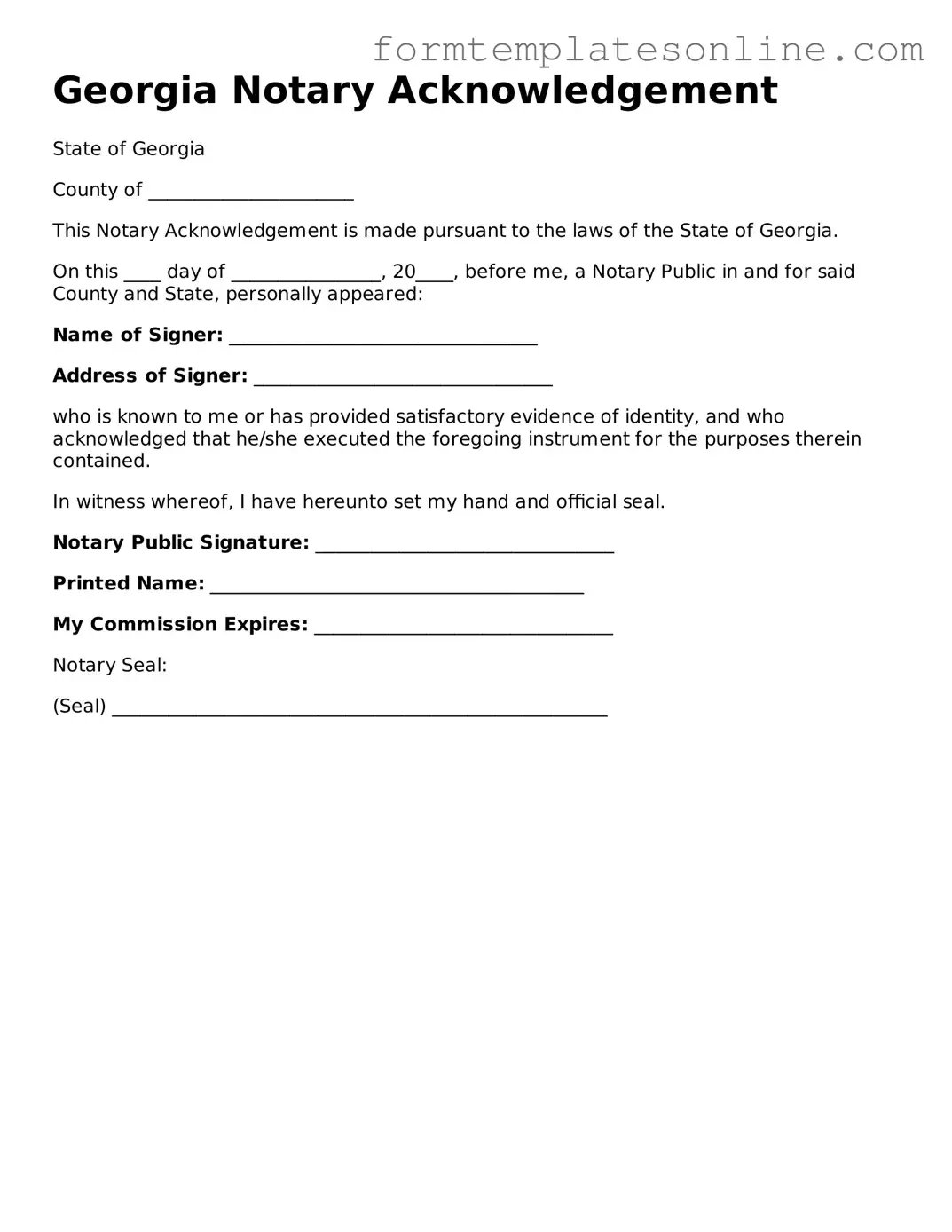What is a Georgia Notary Acknowledgement form?
The Georgia Notary Acknowledgement form is a legal document used to verify that a person has signed a document in the presence of a notary public. This form serves as proof that the signature is authentic and that the signer acted voluntarily. It is commonly used for various legal documents, including deeds, contracts, and affidavits.
When is a Notary Acknowledgement required in Georgia?
A Notary Acknowledgement is often required when a document needs to be recorded in a public office, such as a county clerk's office. It is typically necessary for documents like property deeds, mortgages, and certain legal filings. Always check specific requirements for the type of document you are preparing.
How do I complete a Notary Acknowledgement form in Georgia?
To complete a Notary Acknowledgement form, the signer must appear before the notary public. The notary will verify the identity of the signer, usually by checking a government-issued ID. After confirming the signer's identity, the notary will complete the form, which includes the date, the signer's name, and the notary's signature and seal.
Is there a fee for notarization in Georgia?
Yes, notaries in Georgia can charge a fee for their services. The maximum fee is set by state law, which allows notaries to charge up to $2 per signature. However, some notaries may charge additional fees for travel or other services, so it is advisable to confirm the total cost before proceeding.
Can a Notary Acknowledgement be used for out-of-state documents?
A Georgia Notary Acknowledgement can be used for documents that will be submitted in other states, provided that the document complies with the laws of the state where it will be used. However, some states may have specific requirements for notarization, so it is important to check those regulations before using the form.
How long is a Notary Acknowledgement valid in Georgia?
A Notary Acknowledgement does not have an expiration date in itself. However, the validity of the underlying document may depend on other factors, such as the nature of the document or specific legal deadlines. It is essential to ensure that all documents are executed in a timely manner to avoid any legal issues.
